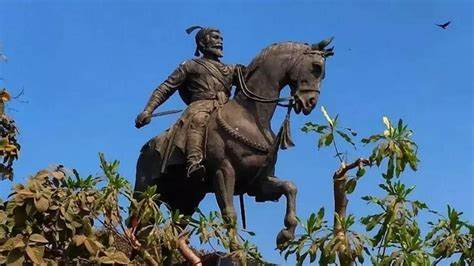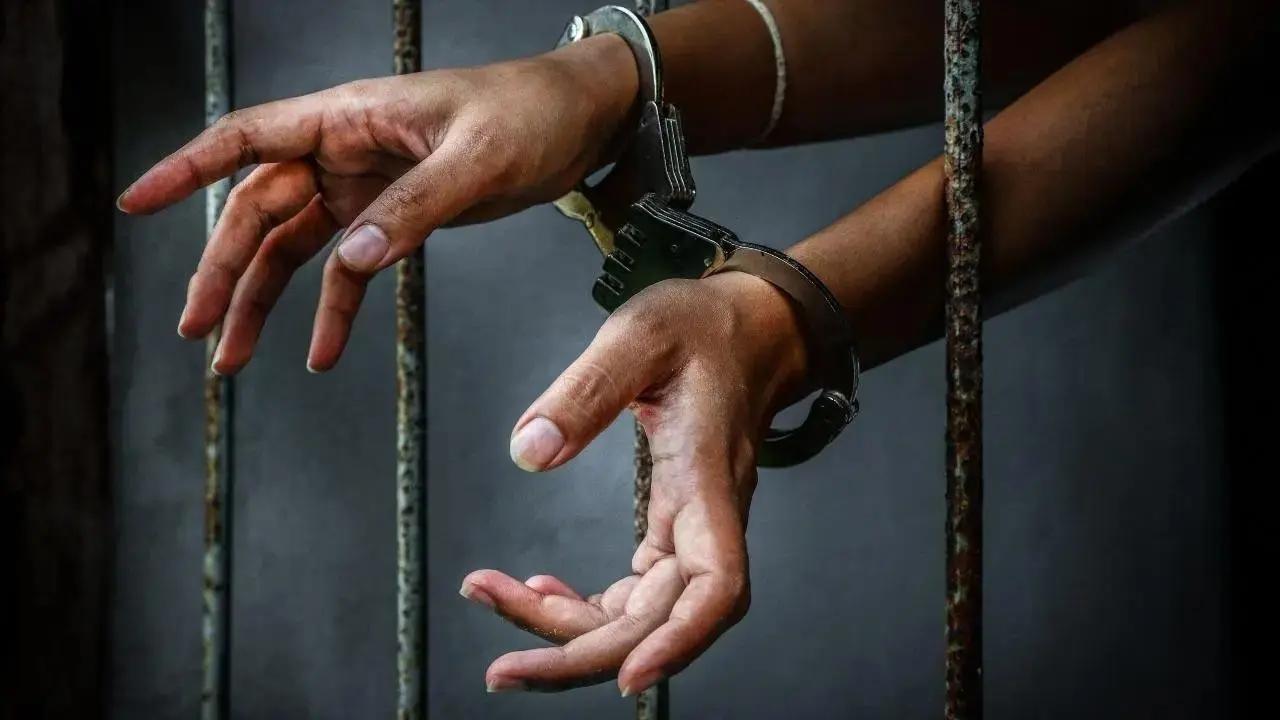3 arrested for desecrating Chhatrapati Shivaji Maharaj statue in Goa

3 arrested for desecrating Chhatrapati Shivaji Maharaj statue in Goa
In an act that underscores the commitment of Goa police to maintaining law and order and preserving cultural heritage, three individuals were swiftly arrested on Tuesday for their alleged involvement in the desecration of a statue commemorating Chhatrapati Shivaji Maharaj near Mapusa town in Goa.
The statue, an embodiment of the iconic 17th-century warrior king’s legacy, was discovered vandalized in the Karaswada village of North Goa district. The incident sparked concern and condemnation from the local community, prompting immediate action from law enforcement agencies.
In a bid to address this incident promptly, local police detained three suspects believed to be connected to the desecration. These individuals, identified as Nigesl Joaquim Fonceca, Alex Fernandes, and Lawrence Mendes, all residents of Mapusa, were taken into custody for further investigation.
Deputy Superintendent of Police (DySP) Jivba Dalvi, while addressing the press, confirmed that all three suspects had been arrested on Tuesday. This swift response by law enforcement not only serves as a deterrent against such acts but also underscores the authorities’ commitment to ensuring the protection of public spaces and the preservation of cultural symbols.

This incident emphasizes the significance of historical monuments and symbols, particularly those dedicated to revered figures like Chhatrapati Shivaji Maharaj. The immediate action taken by the Goa police reflects their determination to uphold the values and respect associated with these cultural markers.
Furthermore, it reaffirms the importance of safeguarding the historical legacy that such figures represent and sends a message against acts of vandalism and disrespect for cultural heritage.
Overall, the prompt arrest of the suspects and the commitment demonstrated by law enforcement to addressing incidents of this nature highlight the essential role that authorities play in maintaining the integrity of public spaces, preserving historical heritage, and promoting a sense of communal respect and responsibility.
The alleged desecration of the statue of Chhatrapati Shivaji Maharaj near Mapusa town in Goa led to a significant public reaction. On Monday night, a large crowd consisting of hundreds of people congregated outside the Mapusa police station, demanding the swift apprehension of the individuals responsible for the act.
The incident, which reportedly occurred on Sunday night, stirred strong emotions within the community, prompting widespread condemnation and a call for justice. The public outcry underscores the deep reverence and respect that the iconic warrior king holds among the people, reflecting the importance of preserving historical symbols and their associated cultural significance.
To restore the symbol of Chhatrapati Shivaji Maharaj’s legacy, a replacement statue was unveiled on Monday evening. The event was graced by the presence of state social welfare minister Subhash Phal Desai. The prompt replacement of the statue aims to reclaim the honor and historical legacy that the monument represents to the community.
In response to the alleged desecration, the Goa police acted promptly and efficiently. The three accused individuals, Nigesl Joaquim Fonceca, Alex Fernandes, and Lawrence Mendes, were presented before a court. Subsequently, they were remanded in police custody for a period of six days. This step allows for a thorough investigation into the matter and underlines the authorities’ commitment to addressing such incidents with diligence and care.
The public’s passionate response, the prompt replacement of the statue, and the arrest of the accused individuals demonstrate a collective determination to uphold the values associated with cultural symbols and figures of historical importance. This incident underscores the importance of preserving and respecting such monuments while also highlighting the role that swift legal action plays in maintaining public sentiment and the integrity of cultural heritage.
The motive behind the alleged desecration of the statue of Chhatrapati Shivaji Maharaj remains unclear as police officials have not provided specific details at this point. The incident has left both the local community and authorities puzzled, prompting a thorough investigation to determine the underlying factors and motives that might have led to this act of vandalism.
The reaction to the desecration was particularly intense, as evidenced by the events that unfolded on Monday night. An angered mob took matters into their own hands and ransacked the shops belonging to the accused individuals. This display of public outrage demonstrates the deep-rooted emotional connection that people have with historical symbols and their determination to protect the cultural heritage that these monuments represent.
The three accused individuals, Nigesl Joaquim Fonceca, Alex Fernandes, and Lawrence Mendes, are facing legal consequences for their alleged involvement in the incident. They have been booked under various sections of the Indian Penal Code that pertain to different aspects of the alleged crime. Section 295-A deals with outraging religious feelings, section 153-A addresses promoting enmity between different groups, and section 427-A pertains to committing mischief and causing loss. The inclusion of these charges underlines the gravity of the alleged offense and the legal avenues available for addressing such incidents.
The investigation into the incident is ongoing, as law enforcement officers work diligently to uncover the truth behind the act of desecration. Beyond determining the immediate motive, authorities are likely exploring any underlying tensions, conflicts, or broader social dynamics that might have contributed to this act. By conducting a thorough investigation, law enforcement aims to provide a comprehensive understanding of the incident and ensure that those responsible are held accountable for their actions.
Ultimately, the incident highlights the importance of cultural symbols and the strong emotions they evoke within communities. It also underscores the significance of effective law enforcement and justice mechanisms in safeguarding public spaces and preserving the values associated with historical figures and their legacies.




